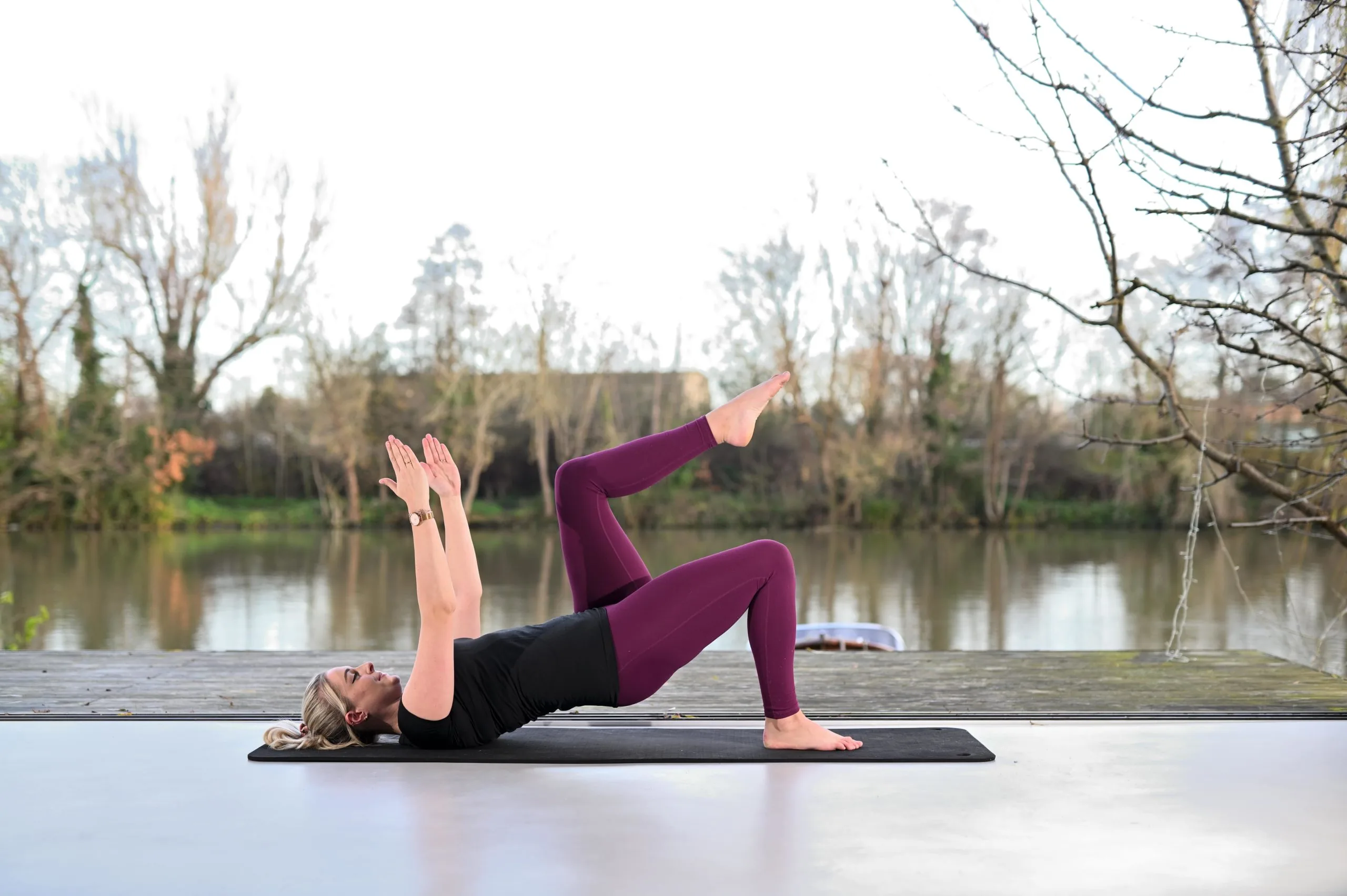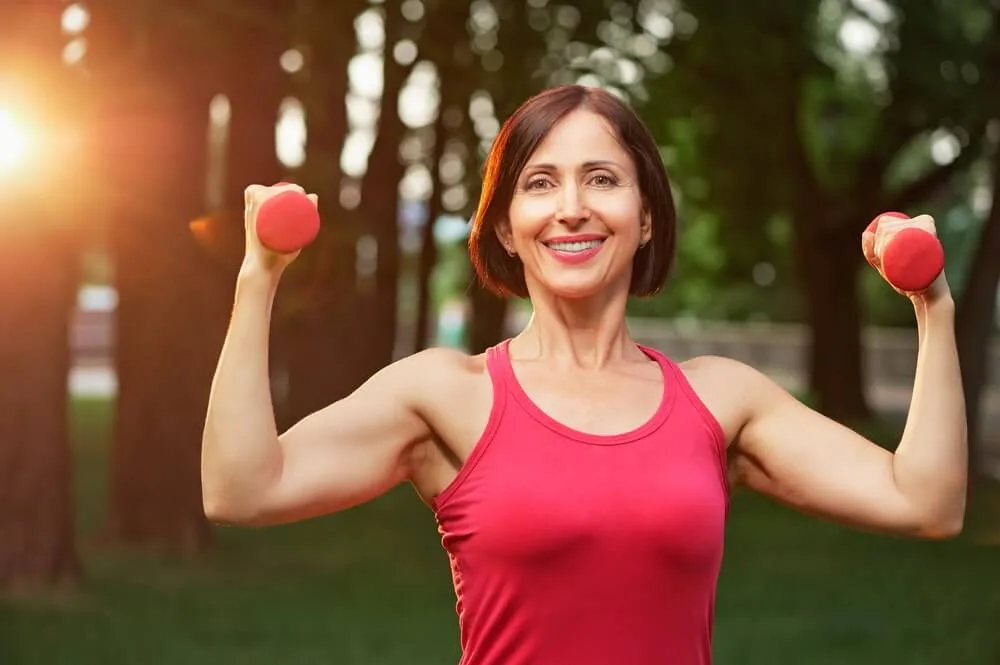Are you a runner who is returning from an injury? Do you get back pain when you walk for a while? Maybe you’ve been getting lower back pain in the gym or simply want an exercise progression? Or do you want to save time and get stronger whilst you stretch out your hip flexors at the same time? If so, then the single leg glute bridge is perfect for you.
You don’t require any equipment for the single leg glute bridge so it can be performed at home, the gym or even if you’re travelling making it a great exercise to incorporate into your regime.
In this article, we’ll be discussing:
- What is the single leg glute bridge?
- How to do the single leg glute bridge?
- What are the benefits of a single leg glute bridge?
- Who is the single leg glute bridge suitable for / not suitable for?
What Is The Single Leg Glute Bridge Exercise?
The single leg glute bridge is an advanced bridge exercise. it’s that bit more intense as you drive up through just one leg, isolating and strengthening the all-important glutes, hamstrings and firing up the core.
Without strong glutes you run the risk of putting unnecessary strain on your back and other parts of the body which can then cause injury and affect performance. Strong glutes are essential for everyone but especially important for runners and those who lift weights to help prevent injury in other areas of the body which take over if the glutes are weak.
How To Do A Single Leg Glute Bridge?
- Lie on your back with your knees bent up onto a chair or table. Keep your feet shoulder-width apart.
- Lift your left leg into a tabletop position away from the chair or table keeping your foot flexed.
- Keep your upper back on the floor, engage your glutes and drive through your right heel raising your hips off the ground until your knee, hips, and shoulders form a straight line.
- Keep your core engaged the entire time.
- Pause at the top, squeezing your glutes for one to two seconds.
- Then gently lower back down to the start.
- Repeat 3-4 times and then switch legs.
Single Leg Glute Bridge Exercise Tips:
- Remember your pelvic clock.
Try to keep your hip bones level. Knowing your pelvic clock will help with this. If you feel it in your back, see if you can tilt your pelvis towards 12 a little more. Your 3-9 on the clock needs to remain level! - It is all in the feet.
Press your heels down into the floor to activate the back of your legs rather than lifting from your back. Your feet should trigger the movement in your hips and spine. By pressing harder into one foot, it also allows the other to lift easier. A great tip for those harder exercises to come. - Let your spine move freely.
Rather than peeling off the floor, try to create space. Pull your heels towards your glutes and send your knees over your feet to create space in your hips. Try to go back down by going along the mat rather than just down. - Let your legs do the work.
Feel your body hang off your legs. If your shoulder blades are on the floor and you can breathe this will help. - Go parallel.
If your knee is falling across your body when you lift the leg, try to re-stack your pelvis in 3-9 on the clock and pull the leg out. This requires hip differentiation.
Single Leg Glute Bridge Benefits
The single leg glute bridge exercise has many benefits! Just like with your standard glute bridge, the single-leg glute bridge targets all the glute muscles, lifting one leg adds work to your hamstrings making it that bit more intense. It’s also a great way to improve your hip mobility, decrease knee pain and strengthen your lower back – improving posture, making it perfect for any desk-bound worker.
Single leg glute bridges are great for:
- building strength in the glutes
- improving hip mobility and lower-back strength
- stabilising the spine
- strengthening the core
Who Is The Single Leg Glute Bridge Suitable For?
The single leg glute bridge is suitable for anyone who wants to build strength in their hips, glutes, lower back and core. It’s the perfect exercise for any athletes who need strong glute muscles such as runners. It’s especially great for anyone who spends a lot of time sitting behind a desk all day where the hip flexors can become tight and result in the glutes effectively switching off – this movement counteracts that.
Who Is The Single Leg Glute Bridge NOT Suitable For?
If you are in your second and third trimester of pregnancy then the single leg bridge exercise may not be suitable for you. This movement is performed lying on your back which is advised against during these stages. Additionally, if you have any injuries to your neck, back, or ankle, you should talk to your doctor or exercise specialist such as a Clinical Pilates Instructor for your own individual advice as this movement may not be right for you.
Why Do The Single Leg Glute Bridge?
Essentially the single-leg glute bridge is a great way to target a number of muscle groups throughout your body, such as the glutes, hamstrings, hip flexors and lower back muscles. As already mentioned they are especially ideal for runners and jumpers, people who lift weights or anyone who sits down for long periods of time during the day.
If you are new to exercise at Complete Pilates, we would advise you to always speak to your doctor or physiotherapist before starting a new exercise routine, especially if you have any health concerns or are new to fitness.
If you would like more information, do reach out to our team of clinical Pilates instructors here at Complete Pilates who are all trained to safely treat and create manageable plans to keep you healthy.
Related Reading: Pilates moves for legs
Get in touch with us via email or contact us on 0203 764 5668 for further information.
Education is key:
These blogs are designed to give information to everyone, however, it is important to remember that everyone is different! If you have not seen one of our therapists and have any questions about injuries, what you have read or whether this may be useful to you, please just ask. We are more than happy to help anyone and point you in the right direction. Our biggest belief is that education is key. The more you understand about your injury, illness and movement, the more you are likely to improve.




